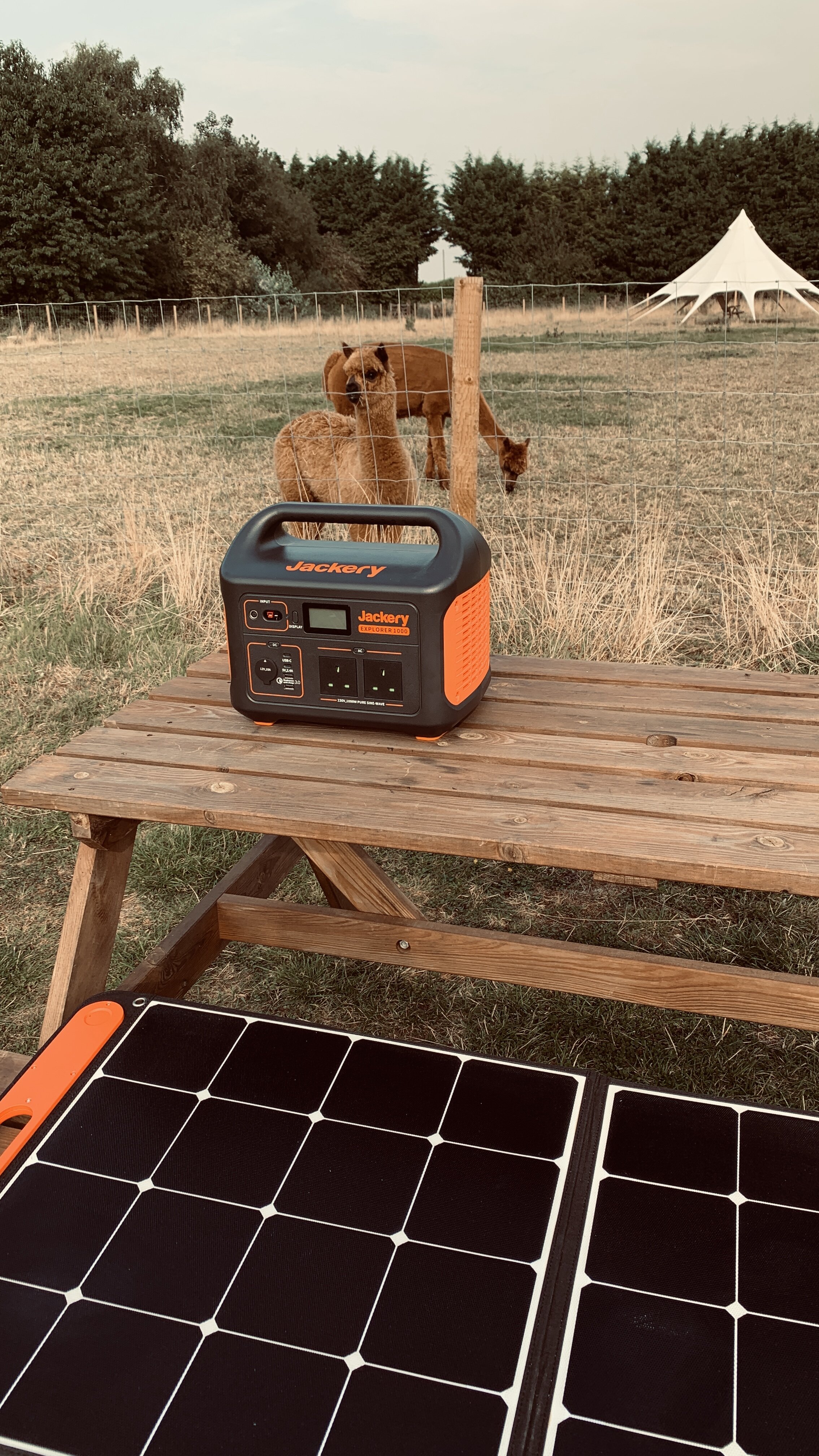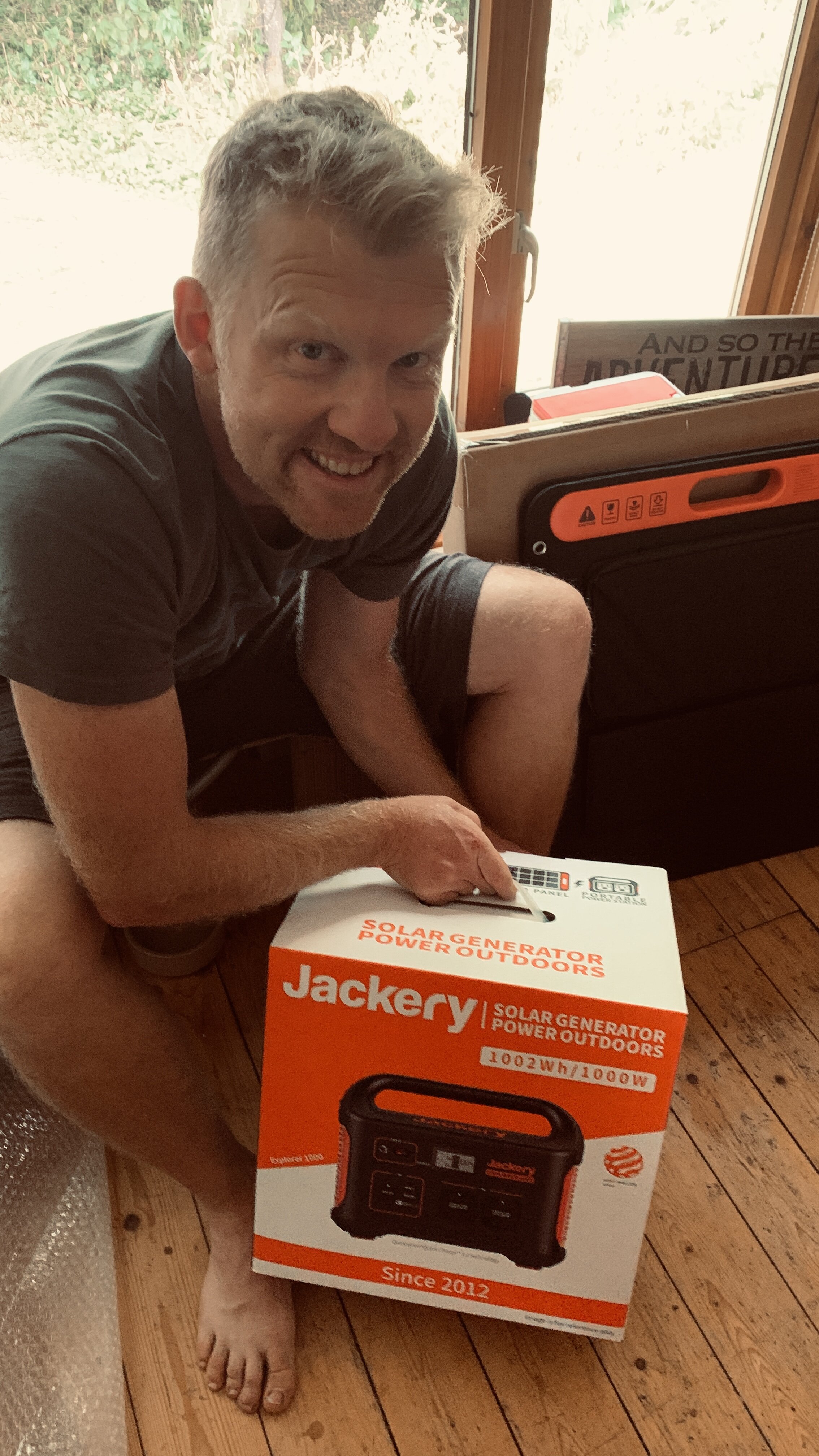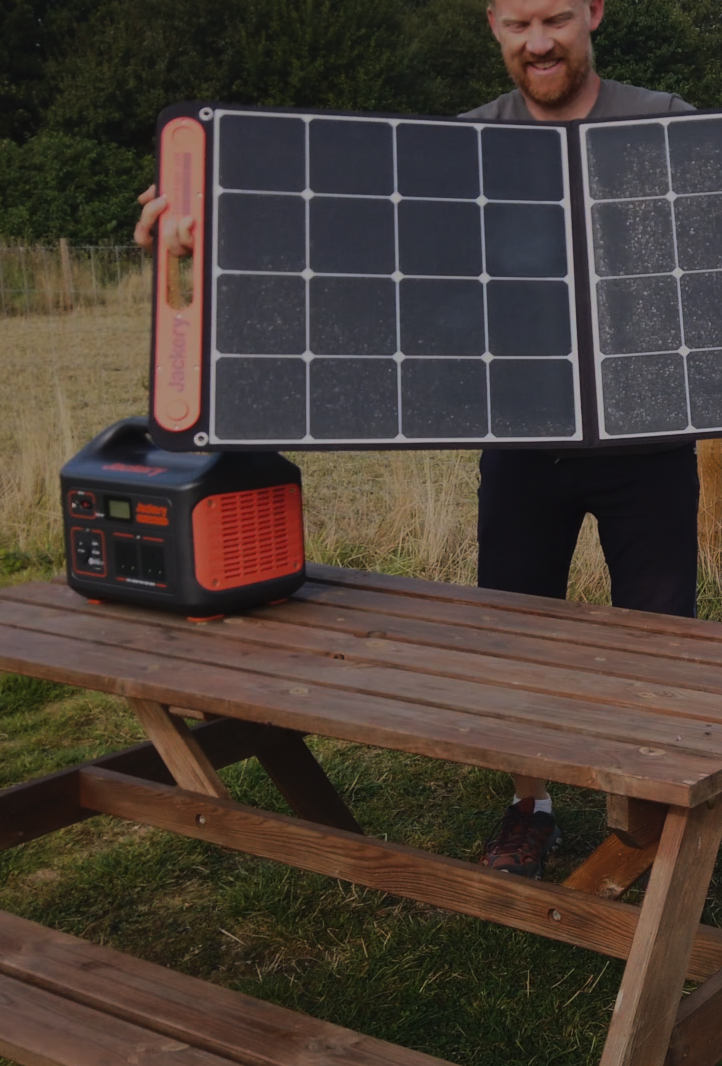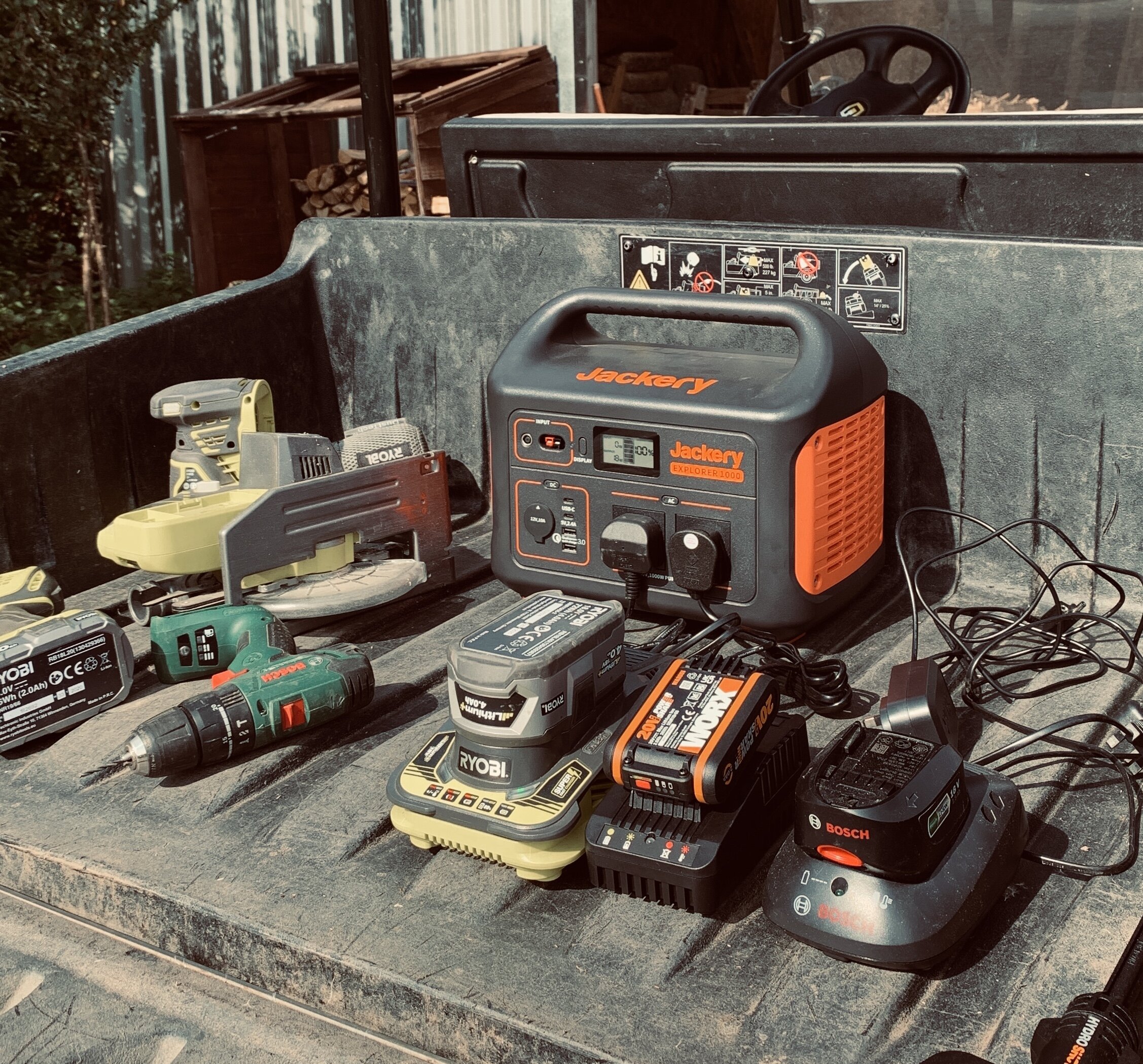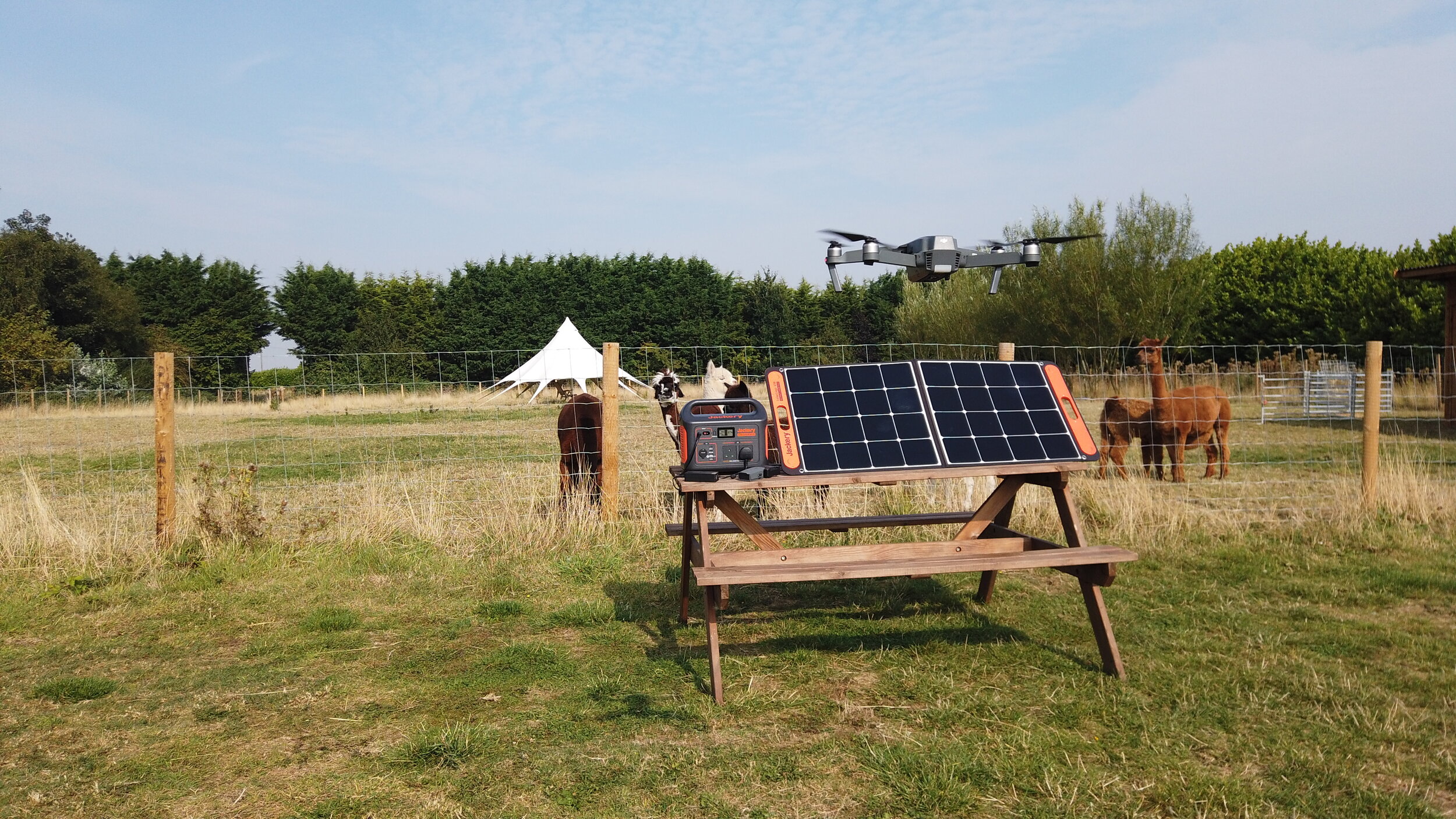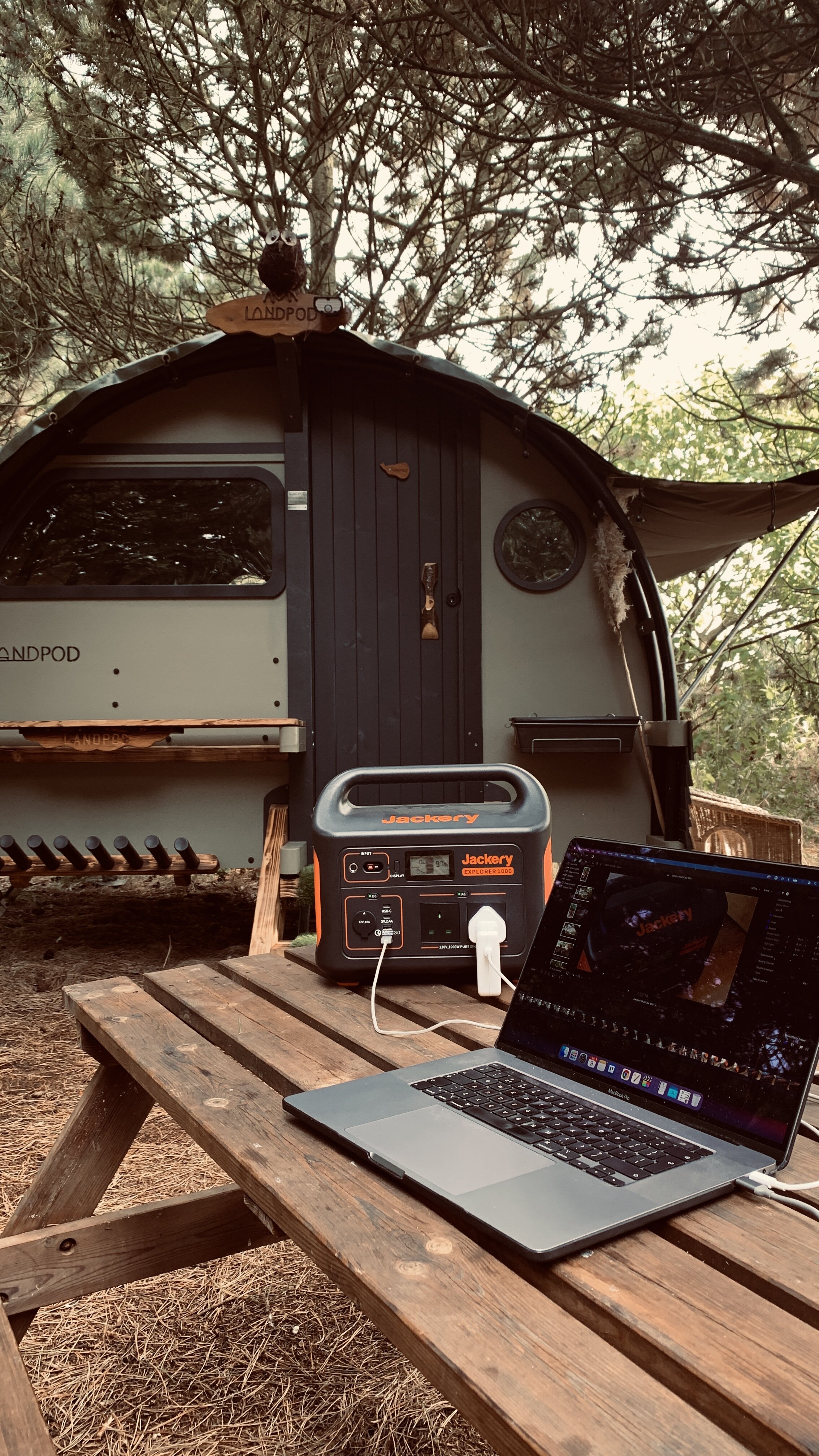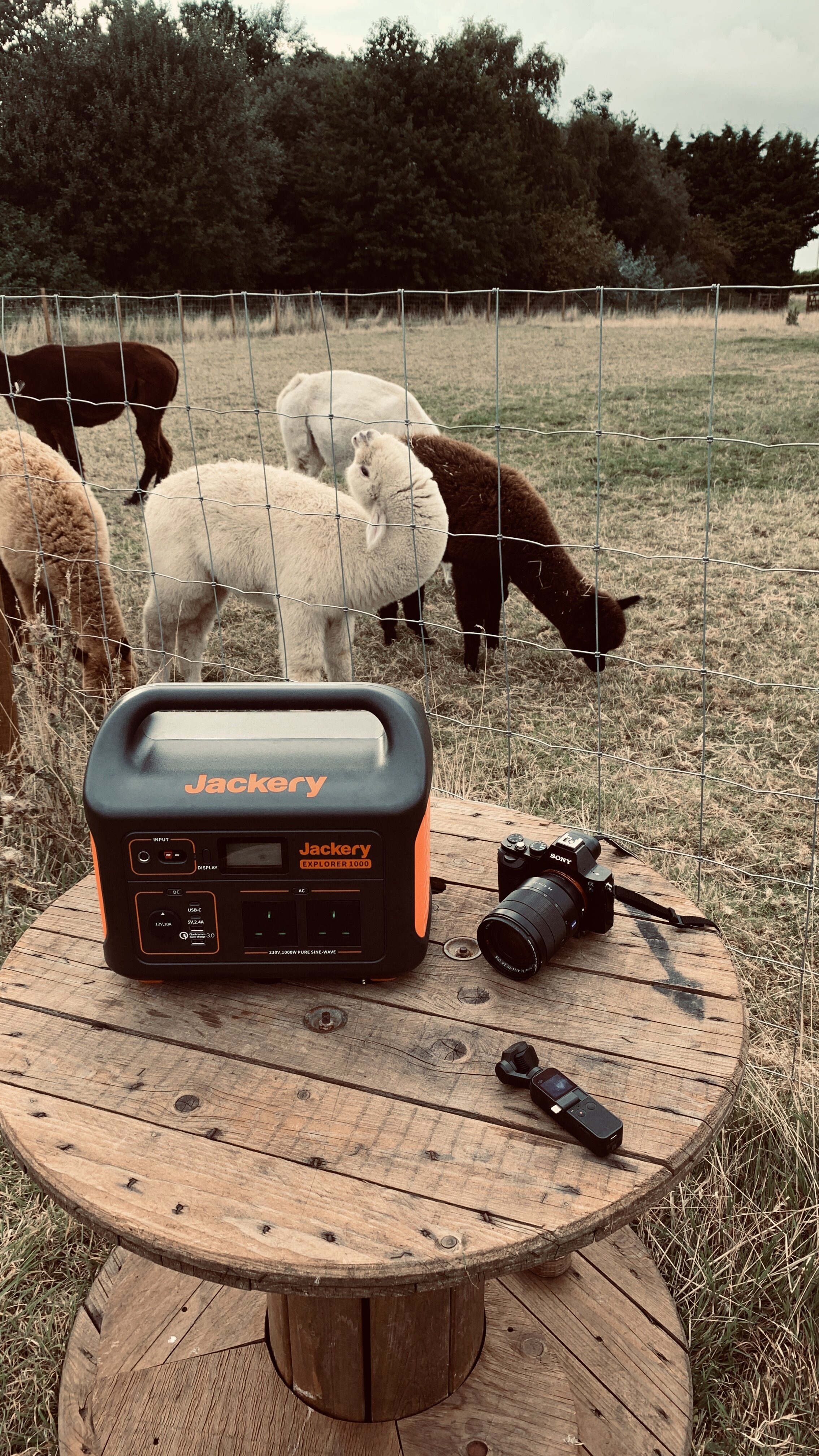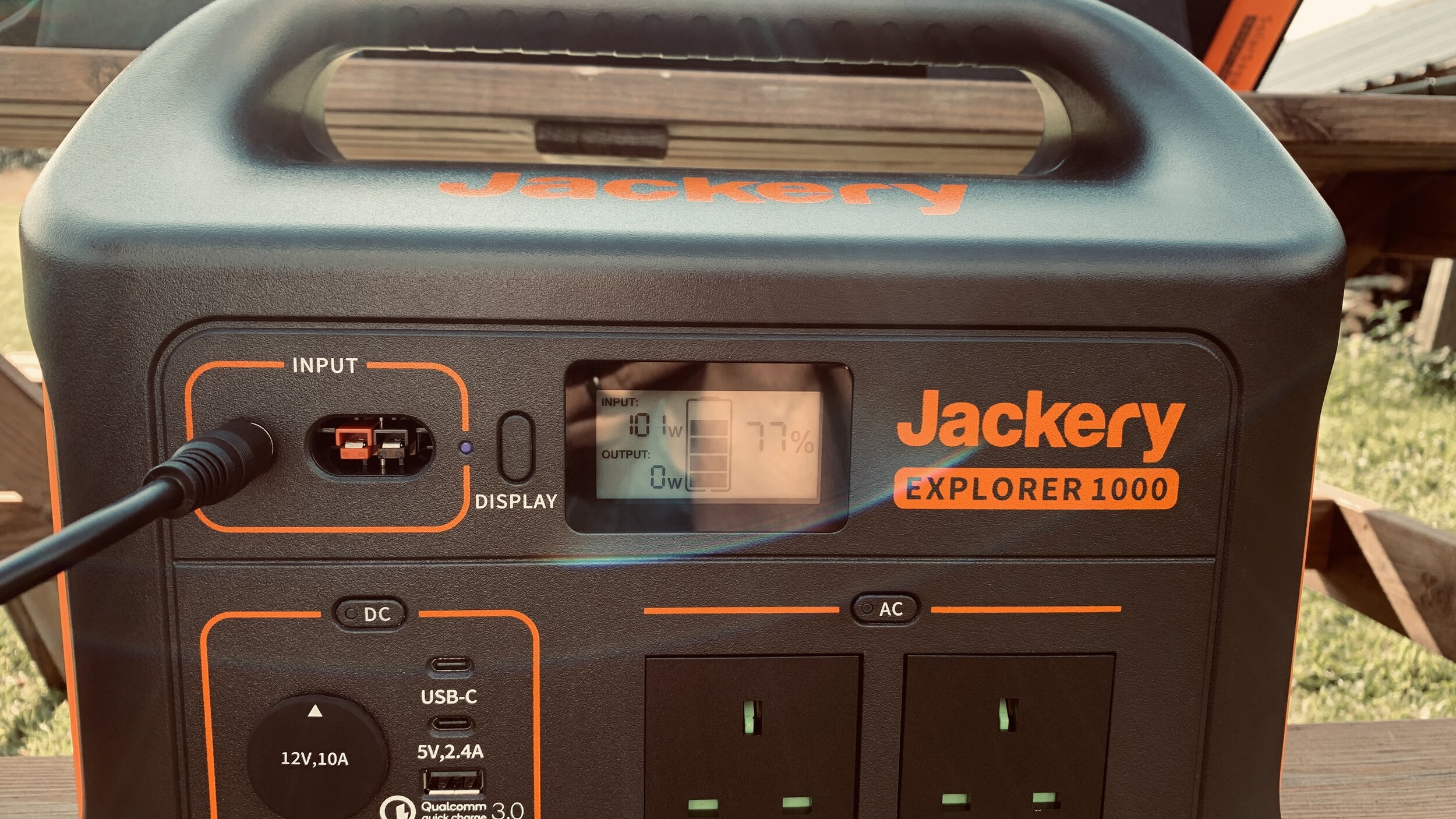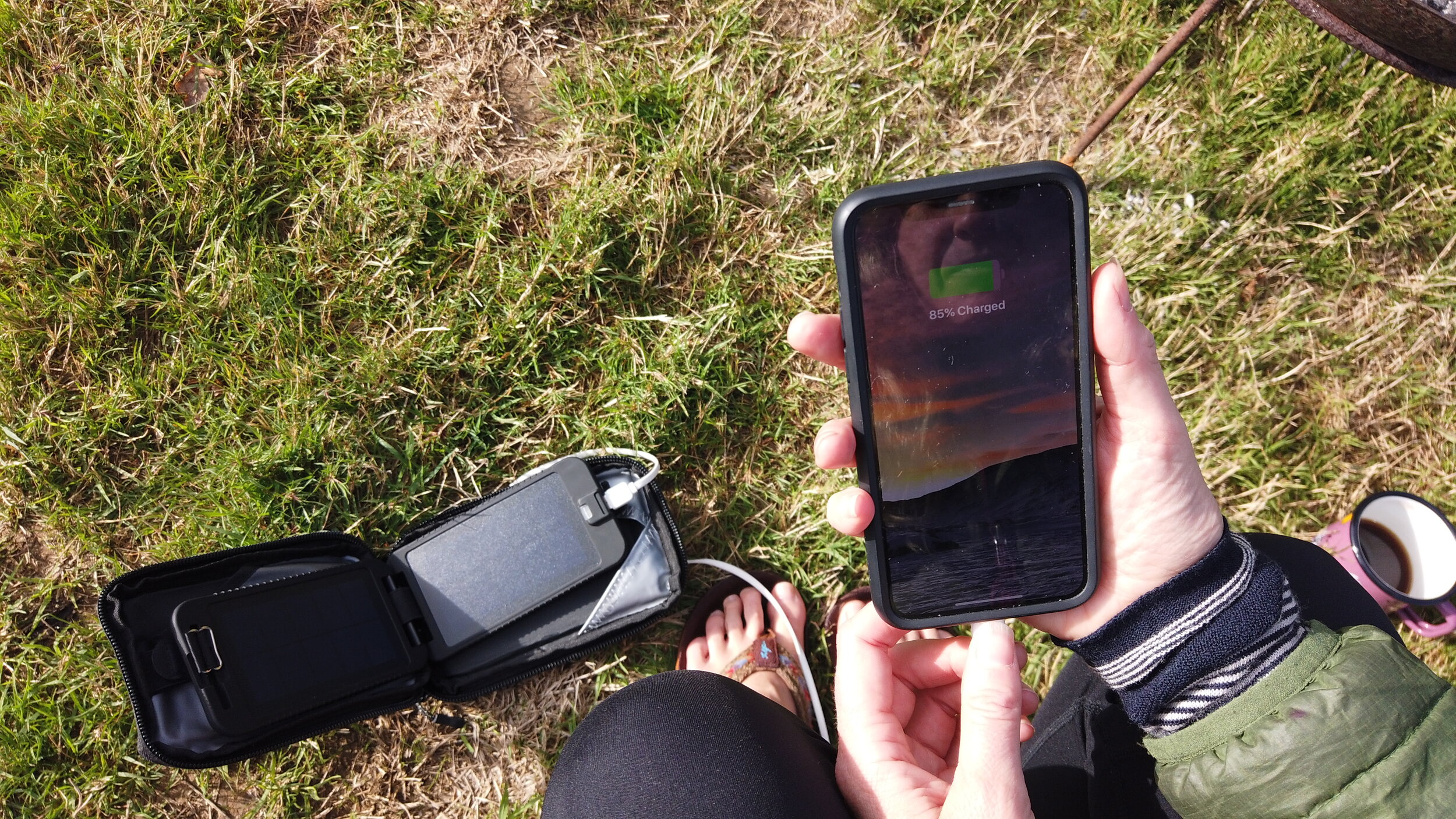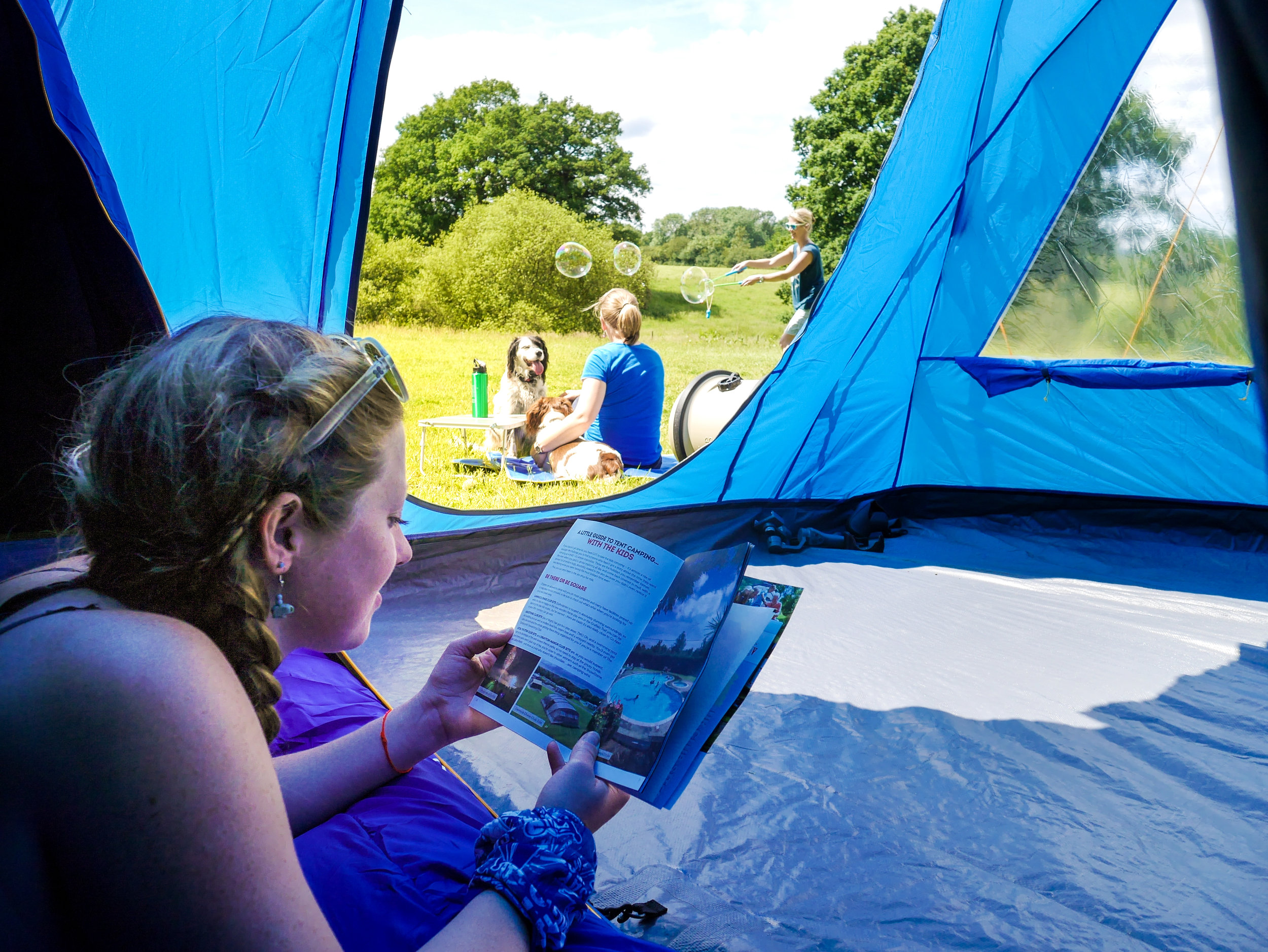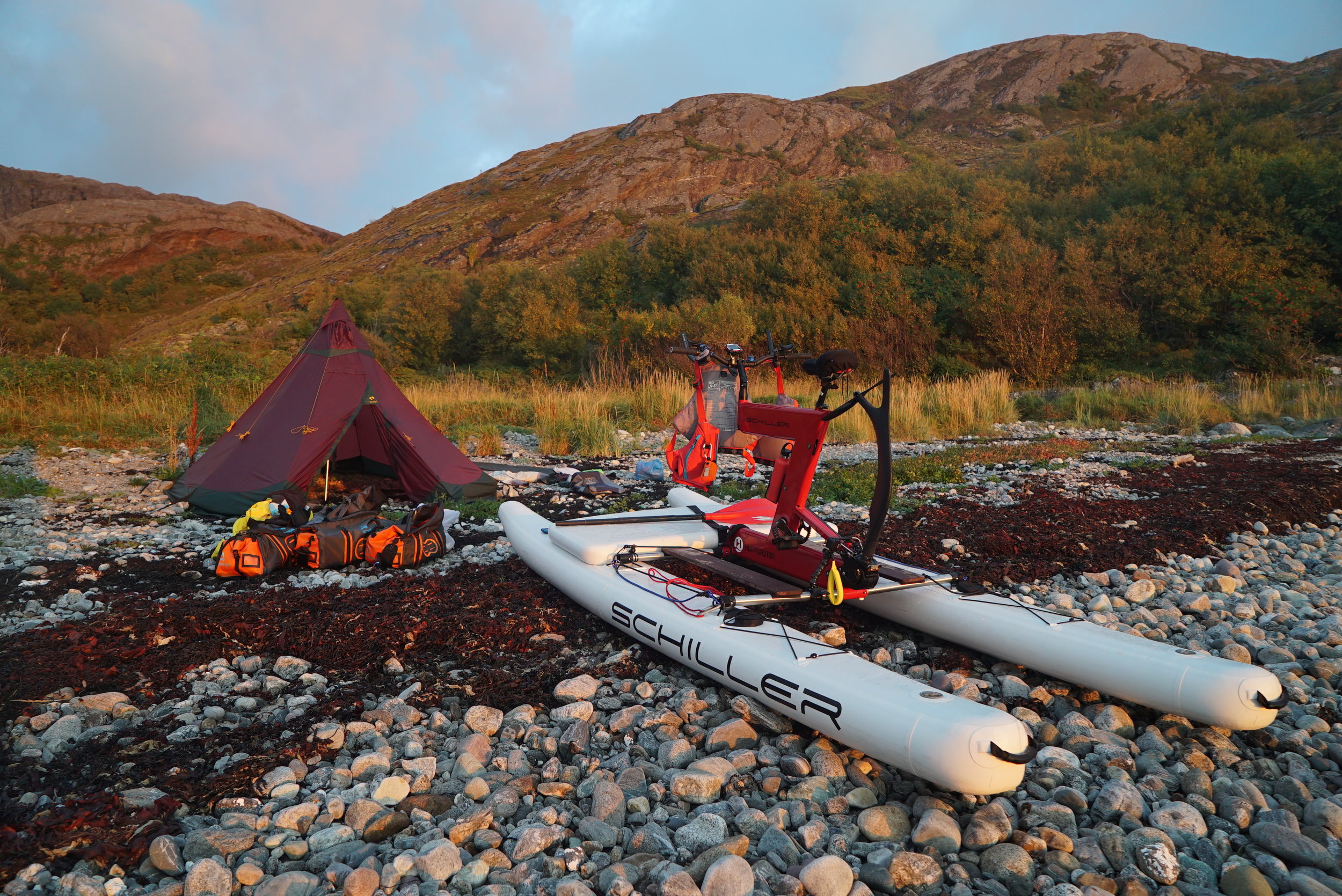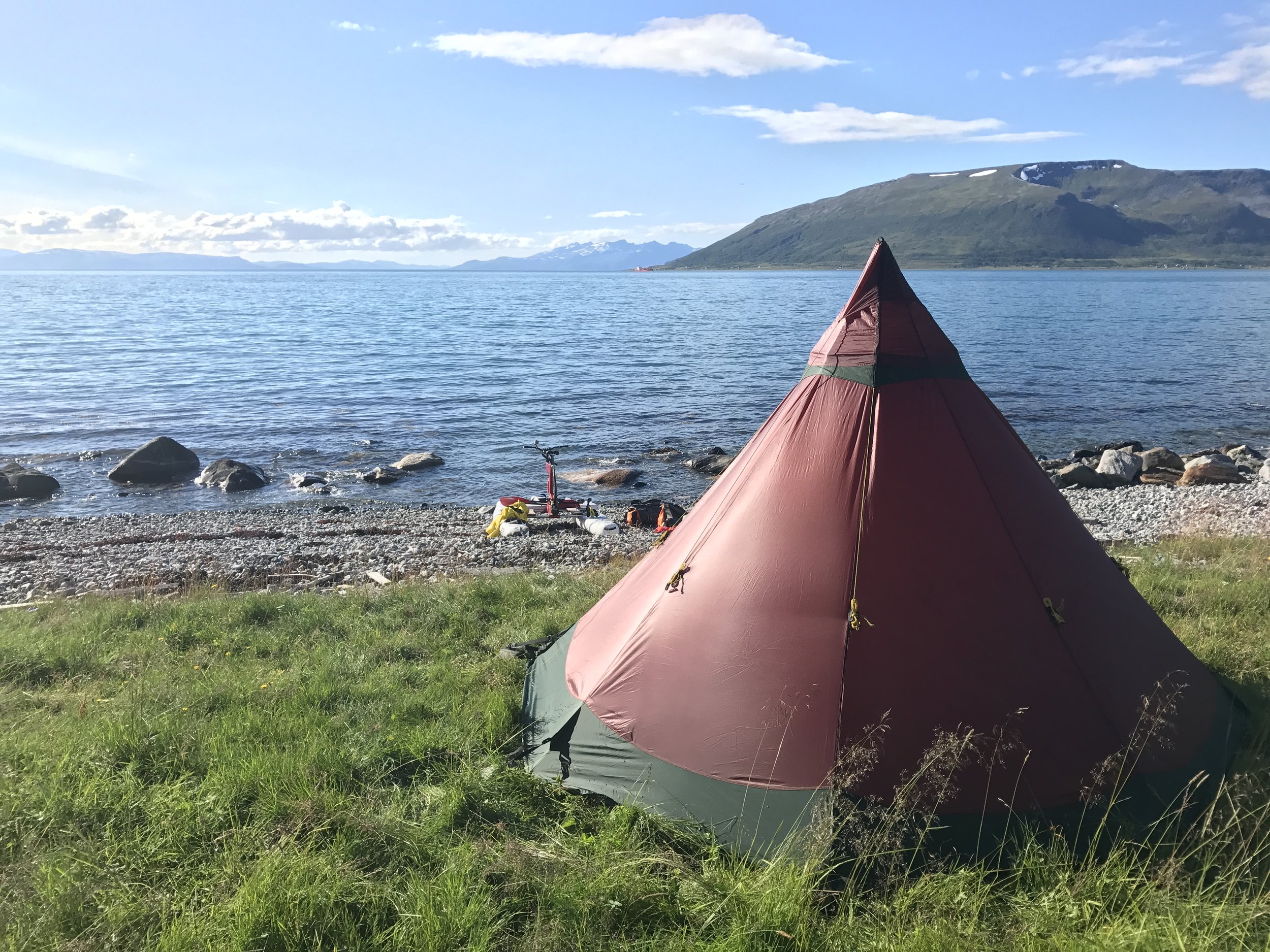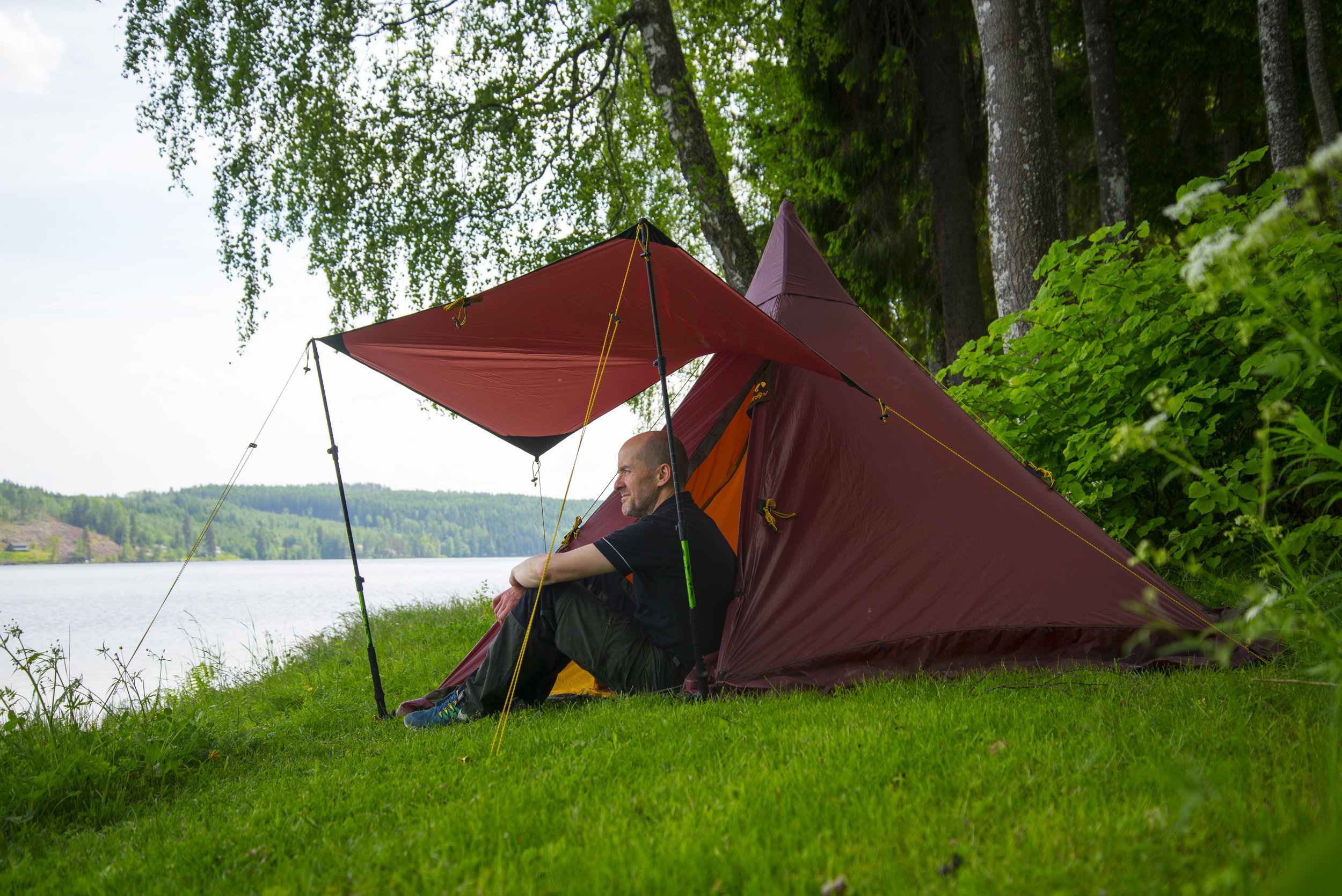Ten months ago Em and I moved to a fifteen acre site in Lincolnshire, which we lovingly call the Big Sky Hideaway. After months of figuring out how to power different areas of our site we’ve finally found the solution in a range of battery and solar panel products made by a company called Jackery.
The Big Sky Hideaway is home to some very cool accommodation options like converted buses and Landpods, a spacious camping meadow, a small herd of fluffy alpacas, a bunch of eco-friendly toilet and shower blocks, a couple of field kitchens and a big old barn that we’re turning into a community space. Plus a lot lot more.
From the off it was important to us that we power the site using renewable energy. We’re here for the long run and in that sense, renewables and solar in particular are as clever for our finances as they are good for the environment.
For a few months we looked at more conventional options for installing solar power but it never felt straight forward. Buying in solar converters, panels, batteries and inverters felt like a huge headache given we like simplicity, and with multiple areas to power on site we felt restricted with investing in solar for our barn, which was the priority.
And then we found Jackery. The idea of a portable electric battery with an outgoing wattage to rival the existing system on our converted double decker (The YesBus) felt dreamy, but could it really do everything we needed it to?
After a few weeks of research and general envy looking at the Jackery channel on Instagram we decided on our favourite options and then stared at our parcel box for 48 hours!
We opted for:
1 x Jackery Explorer 1000 Portable Power Station
2 x Jackery SolarSaga 100 Solar Panels
The aim was to test the power station and panels all over site in a number of different ways and then figure out whether or not the Jackery gear worked, and if it did then whether or not we needed more panels and power stations to ensure our off grid site never ran out of power.
The unboxing
Jackery have definitely got their branding spot on. Of all the portable electric power stations on the market it’s hard to find any that come close to Jackery’s marketing. The packaging is swish, gorgeously put together and doesn’t do anything to numb the pending excitement of discovering what is inside.
And inside, there’s zero disappointment.
The Explorer 1000 is one of Jackery’s largest units and it’s a weighty little number, coming in at just under 10kg. It’s really well designed with rounded corners and edges and an inbuilt handle that makes for comfortable carrying. It’s solid, feels like it could withstand a bump or two, and frankly would make the best gift for a friend you want to really, really like you.
The Explorer 1000 boasts two 230V three-pin plugs (if you get it from the UK store, as we did), 2 x USB-C ports and 2 x USB ports, one of them a Quick Charge 3.0 output. There’s also a 12v car port (cigarette lighter style) and two inputs, including an anderson adaptor.
I was just as enthusiastic about the SolarSaga 100 panels as the power station. They’re folded in half with a hard shell with a velcro’d stand on each side of the panel to enable standing at different angles, and the attached charging wire is connecting to the back of the unit within a zippable pouch. The connector slots right into the left-most charging input on the Explorer 1000 power station.
How we use Jackery at the Big Sky Hideaway
We’d told Jackery that we could find endless ways to use their gear on our site and they set us a challenge to record at least ten of these, so….here goes.
1 - Coffee Machine
Doesn’t every day start with coffee? Although we love boiling the kettle up over a wood fire we headed over to the Cosy Cocoon Landpod in our woodland and set up the Explorer 1000 Power Station in the field kitchen, which shelters underneath an old army parachute. Our coffee machine usually lives in our home kitchen but it enjoyed a trip to the woods and the Explorer 1000 didn’t sweat, using up about 15% of its capacity on a full brew.
It’s worth noting that high draw electronics which need over 1000W at peak will not work with the Explorer 1000. Most power tools, hair straighteners, slow cookers and electric heaters would need more than 1000W but our coffee machine takes around 850W, so all good.
2 - Tools
We’re still in Year One at Big Sky so every day is spent creating a new space or building something. Battery-powered tools are our friend and we have batteries to charge for drills, jet washers, strimmers and saws. The Jackery makes mince meat of any of these batteries and can charge our whole battery collection at the same time, eight times over.
If we’re working away from the house the Jackery lives in the back of our electric buggy (which by the way, the Jackery can charge!) and keeps everything powered up. Job done.
3 - Cameras and Drones
Filmmaking and photography formed a big part of our pre-campsite life and work and not much has changed. Keeping social media channels and our website populated with enticing images is the name of the game for a (hopefully) successful small business and the Jackery Explorer 1000 keeps phones, drones and cameras topped up throughout the day meaning we never miss a shot.
4 - Game time
This is a lifestyle for us and while we work hard it’s great to chill out sometimes. I love my sport and the Explorer 1000 packs enough punch for multiple back-to-back grand prix, football/ tennis matches or like this Summer, day-after-day eventing in the Olympics and Paralympics. Grab a beer, put the TV wherever you like and light the fire. Bingo.
5 - Date night
This week saw in our third anniversary since we married in a woodland further south. While Em drove out to get a Thai takeaway I rushed around our small meadow setting up fairy lights, firebowls, candles and a nice little music system, which pumped Motown out into the dusk sky. Em loved it, I loved it, the alpacas loved it. Thank you Jackery, that was awesome. Next year we’ll be offering anniversary/ birthday/ special occasion packages that we’re now way more confident in.
6 - OFFice Grid
While I love having an office in a house after a decade of working on the move, it’s great to take the laptop out to different parts of our site on a nice day, and edit films and photos beneath the trees. The Explorer 1000 keeps a laptop charged for literally days, and my Mac is a 16” beast which guzzles power. Need to plug in the phone, camera batteries and even a second screen? No problem at all!
7 - EV charging!
We have this cool little electric buggy (it’s not a golf cart!) that helps us service our site, things like taking firewood to guests and getting us to the far flung pods with fresh water and other bits and bobs. We’re careful with its charge but now and then we run so low it…erm…doesn’t move. The Jackery Explorer 1000 won’t give it a full charge or put up with the EV’s demands for long, but it can provide a quick fire juice-up to ensure our buggy gets back to its proper charging point at our house.
8 - YesBus Battery charge-up
We have this awesome converted double decker on site called the YesBus. The YesBus is first and foremost a community basecamp for the YesTribe, a positive, kind and adventurous community that Em and I also happen to run. These days the YesBus splits its time between community basecamp and a rental for guests. On consecutive cloudy days the YesBus batteries, which are charged up with its own array of solar panels, can run low if lots of lights and gadgets have been left on, in which case up steps the Explorer 1000 which we can cleverly hook-up to charge the YesBus batteries. Genius.
9 - Alpackages
We mentioned cameras above, but keeping our phones charged up are especially important seeing as any given moment our cheeky alpacas will pull a move worth capturing. We offer alpaca feeding as one of our experiences here at Big Sky and people love photos of their hands being shnuffled by the pacas. My personal favourite for photographing is one of our babies, born just a few weeks ago, his name is Jammie Dodger and he has a marvellously bendy neck.
10 - The barn!
Next year our barn (which was actually built as a hanger for the previous owner’s plane!) will be a centrepiece for any events at Big Sky. We’re turning it into a multifunctional event, community and chill-out space and if there’s anywhere on site that really needs a power solution it’s here.
These last two days I’ve built a south-facing woodshed just outside, which conveniently provides just enough space for both SolarSaga panels to spread out and sunbathe.
Just inside sits a brand new charging bench where the Explorer 1000 Power Station lives when the site is open. We’ve yet to give it a proper run-out as the barn is still mostly a shed for building bits and bobs for the site (the mancave game is strong!) but already we can tell we’re onto a winner with this system. It currently powers batteries for all manner of tools, the remote WiFi router, security camera modules, a hefty speaker, lights and most importantly, the fridge in the bar!
We’ll soon have a big drop-down screen for film nights and corporate team build presentations and the Explorer 1000 will power the projector, too.
Potential future uses
Film nights - these are just around the corner and we know the Explorer 1000 will power our projector AND popcorn maker. Bring it on.
Field kitchens - we have plans for a large field kitchen in our camping meadow, a place where guests can meet, cook, wash up and eat. Jackery will come in handy for powering electric cookers, the lights, people’s phones and no doubt other bits and bobs.
Bell tents, tipis and domes - we’re always thinking about different types of accommodation at Big Sky, the more unique the better. Each will need power so guests can be comfortable and we’ll definitely be using Jackery power stations and panels to keep the lights on!
It’s hard to remember what life at Big Sky was like before we got our Jackery gear, but if we use anything on site more than the Explorer from now on then I’ll eat….one of the solar panels.
We couldn’t be happier with the Explorer 1000 and on a sunny day the two Solar Saga batteries take the battery from 0% to 100% in around 5 hours, meaning most of the year we’ll not go wanting.
With two more field kitchens to build on site, both of which will need their own power units, we can certainly see how other Jackery portable power stations will become a part of our future. As an aside, if I was converting a van or a tiny home I wouldn’t consider anything other than a Jackery Power station for the power source. It takes the faff out of running solar-powered electrics through a vehicle or van, and obviously for shorter camping trips out of a tent or a vehicle, Jackery would be a safe option keeping a trip away comfortable and full of juice!
If you like the sound of this gear there are often decent discounts available on the Jackery store and if you’re considering your power options and have any questions please feel free to shoot me any questions via the comments below, or through Instagram channel @DaveCorn.
I’m always happy to chat about the different ways we use #JackeryUK and hope you can come enjoy a stay with us at the Big Sky Hideaway sometime. At the very least you know a cold drink will be waiting in the barn!






